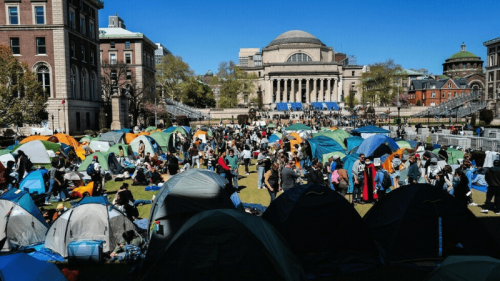The last IMF loan?

IN the summer of 1991, a series of chartered flights left India carrying nearly 70 tons of the government’s gold. In what was seen as a national humiliation, much of the treasure made its way to the vaults of the Bank of England and the Union Bank of Switzerland. Some was sold, and some was pledged, as collateral for foreign currency loans, amid the worst balance-of-payments crisis in India’s history.
The proceeds, coming on the heels of a $2 billion IMF emergency loan, weren’t enough to plug the dollar shortage. Which is why Mr Manmohan Singh, the newly elected Congress government’s technocratic finance minister, had to take drastic steps to reboot the economy, while also approaching the IMF again.
Mr. Singh’s 1991 budget address, delivered just a few weeks after taking office, couched radical economic reforms between quotes from Victor Hugo and Allama Iqbal — Unaan-o-Misr-o-Roma sab mit gaye jahaan se/ Ab tak magar hai baaqi naam-o-nishaan hamaara. It was, as The Economist later put it, a speech “that would change his country and the world”.
An IMF programme would have to be coupled with reforms on as grand a scale as Manmohan Singh’s.
After administering a two-day, 20 per cent depreciation of the overvalued Indian rupee, Mr Singh proceeded to take an axe to every aspect of government control of the economy. Freeing the currency, easing capital controls and regulations, bludgeoning import tariffs, slashing subsidies on food and fertiliser — the scope of the reforms proposed was heroic. Short-term economic pain and political backlash, including from within the Congress party, was to be expected. Nevertheless, Mr Singh persisted with implementation.
Of particular relevance for Pakistan, Mr Singh’s currency market reforms resulted in a near 80pc depreciation of the Indian rupee vs the dollar over the course of his term. The Indian rupee has, broadly, been flexible ever since. The long-term results of his reforms — from humiliating near-bankruptcy to the soaring heights of 6.5pc GDP growth sustained over 26 years — speak for themselves. Also of relevance for Pakistan — India’s 1991 IMF programme still stands, nearly 30 years later, as its last IMF loan. Over the same period, Pakistan has approached the IMF for assistance eight times.
For all his meaningless meandering, Mr Asad Umar was right in his insistence that if Pakistan entered an IMF programme, it must be for the last time. In other words, an IMF programme would have to be coupled with reforms on as grand a scale as Mr Singh’s in 1991. Most importantly, the changes would have to stick — beyond the IMF programme.
So, what sorts of reforms might such an ambition entail?
For starters, real currency flexibility. For too long, Pakistan has been stuck in a cycle of trying to maintain a fixed exchange rate to the dollar, running out of reserves, running to the IMF again, and then administering a lumpy, chaotic, devaluation. This currency manipulation reached absurd proportions with Mr Dar at the helm but, at some level or other, has been a constant feature of Pakistani economic management for the last 30 years.
The folly, and unsustainability of what is effectively a blanket import subsidy, paid for with borrowed dollars, has been written about at length, criticised ad nauseam, and flies in the face of economic theory and practice. This distortion must never be allowed to happen again. This does not necessarily mean a completely freely floating currency, but must be a major step in that direction. It also must remain in place beyond the end of the IMF programme.
To ensure market confidence, this, and any other serious reforms, must be coupled with the clear and consistent communication that characterized Mr Singh and his boss, P.V. Narasimha Rao. To wit, no prime minister-level meetings with currency dealers talking about reining in devaluation, the night before a devaluation. Everyone in the government, from the prime minister down, must understand what is happening, why it is happening, and why it will be good in the long run. To put it in terms the prime minister might appreciate, reform must be played on the front foot.
Beyond ditching rigid exchange rate targets, there is certainly less room for reform than what India had in 1991. India literally moved from a closed socialist economy, to an open, capitalist one in the space of months. Pakistan is a lot more open to begin with. But this should make the reforms needed, easier.
Aside from the immediate stabilisation measures needed to avoid an escalating financial crisis, Dr Hafeez Shaikh and the prime minister must find an axe the size of Dr Manmohan Singh’s and get to work.
The menu comprises the usual suspects — there is no rocket science here. End government support prices for agricultural produce, to end absurdities like subsidising wheat and sugar exports while importing oilseeds. Take the axe to the energy sector — privatise distribution, renegotiate generation contracts where possible, deregulate procurement, and remove political interference from pricing.
At this pace of bleeding from state-owned enterprises, no one has the time for fanciful experiments like Sarmaya-i-Pakistan — privatise, privatise, privatise. Remove the fetters from the real estate market — allow cities to grow vertically. Make sure that projects like Thar and Reko Diq aren’t gathering dust — resources are a handy aid to growth without hitting balance-of-payments constraints. Drive improvements in ease-of-doing-business at no less than the prime ministerial level. All the while, expand social protection programmes like BISP and Sehat Insaf to protect the most vulnerable.
Dr Shaikh may well have a different menu altogether. But if it is any less bold, it will not be enough. If implementation is at anything like Asad Umar’s glacial pace, it will not be fast enough. And if it doesn’t happen now, it will not be soon enough. In which case, this won’t be Pakistan’s last IMF loan.
The writer is a freelance columnist with a background in financial markets and strategy.
Twitter: @assadahmad
Published in Dawn, May 27th, 2019












































